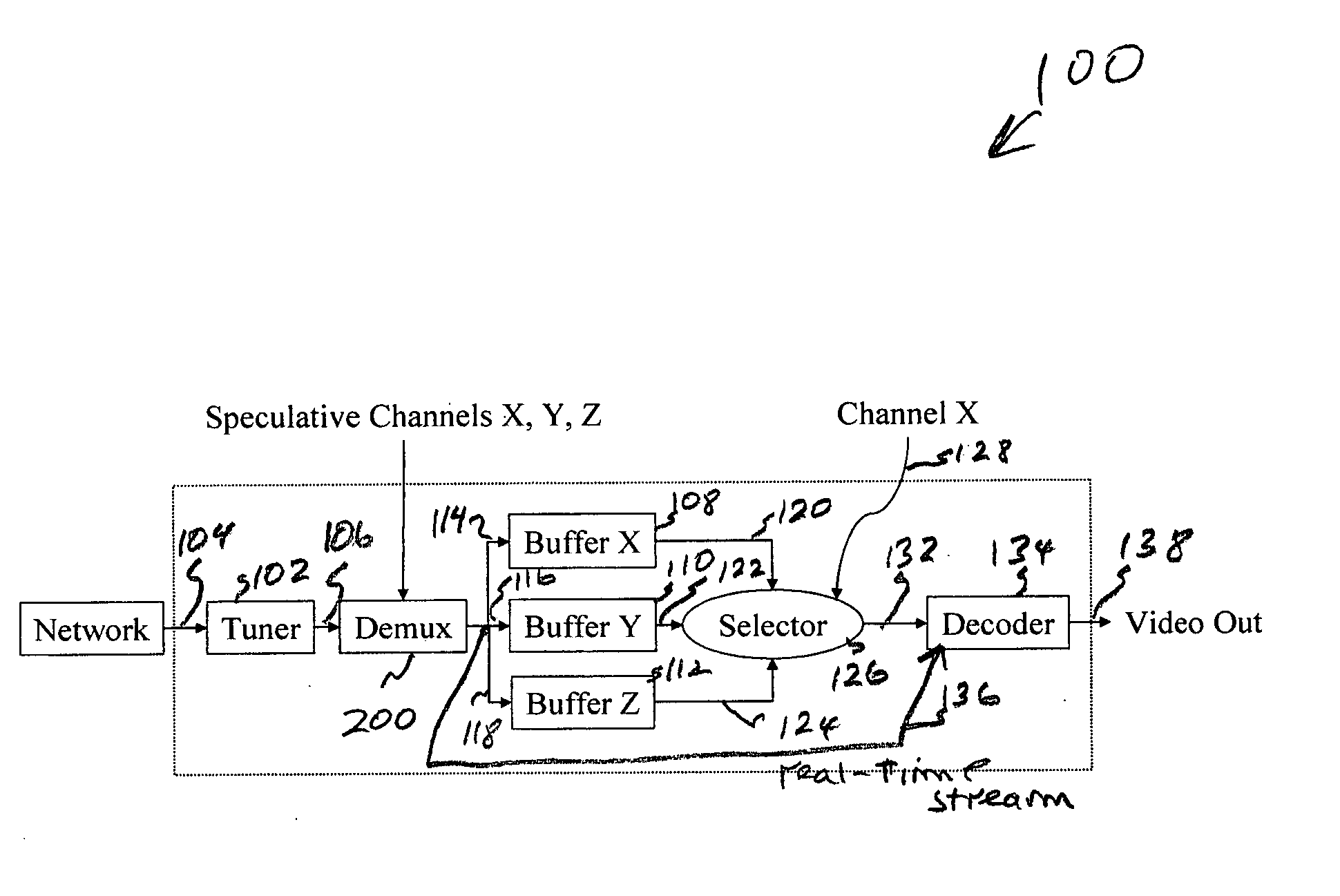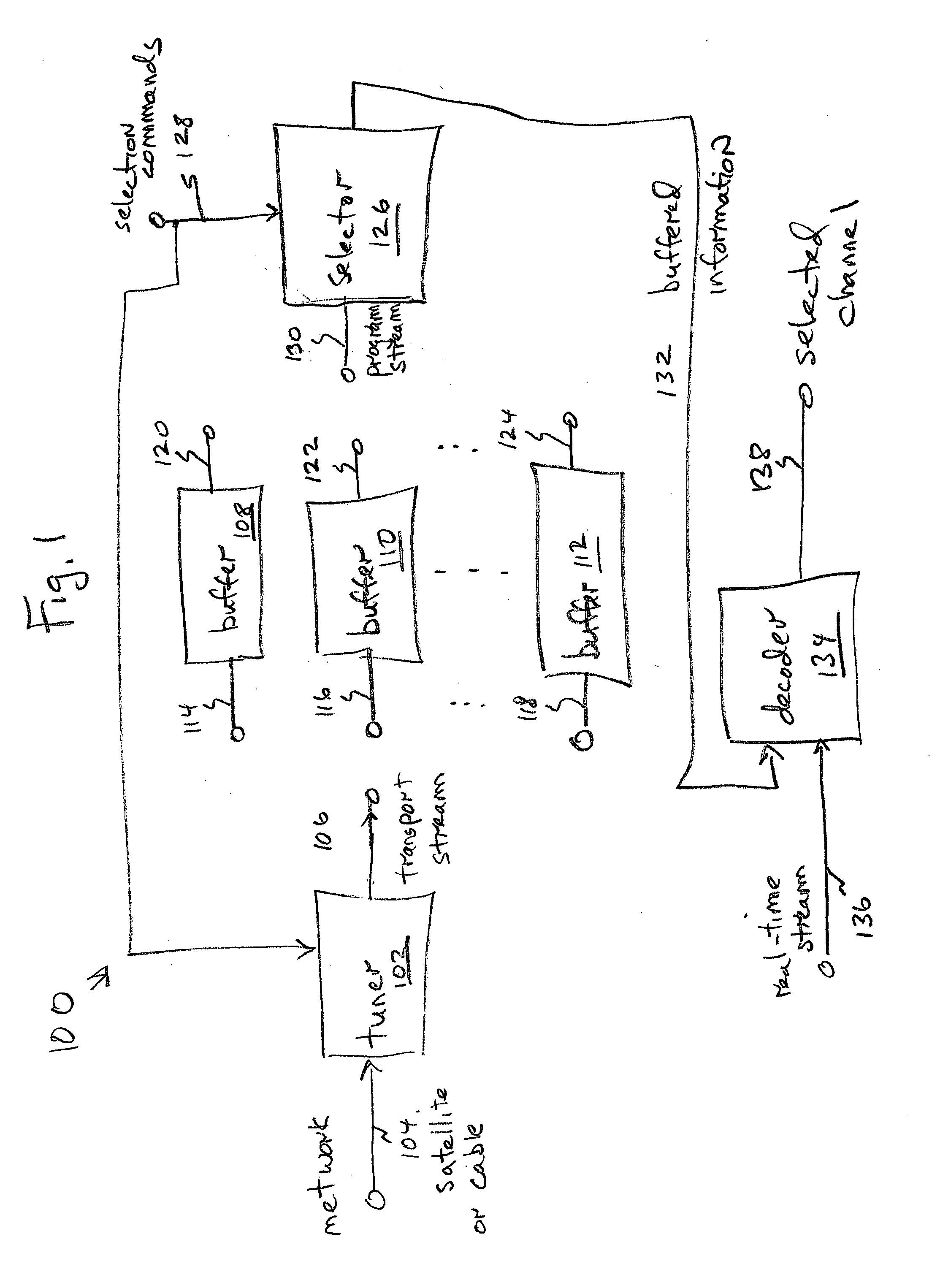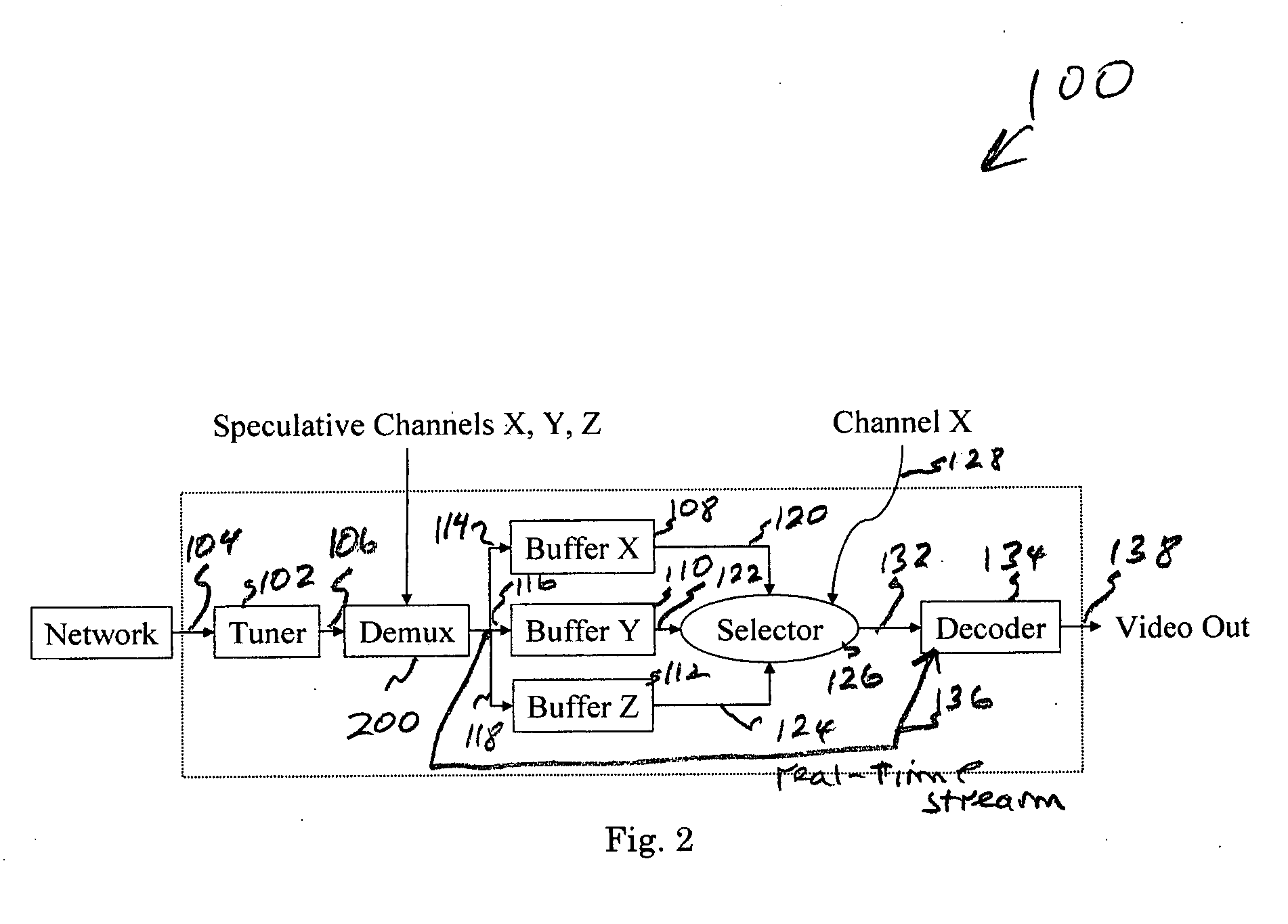System and method for low-delay channel hopping
a channel hopping and low-delay technology, applied in the field of image and video compression coding, can solve the problems of dependency, delay is very annoying to a viewer, and significant delay occurs before the new channel is buffered, so as to reduce the delay in changing channels and reduce the delay
- Summary
- Abstract
- Description
- Claims
- Application Information
AI Technical Summary
Benefits of technology
Problems solved by technology
Method used
Image
Examples
Embodiment Construction
[0027]FIG. 1 is a schematic block diagram of the present invention system for low-delay channel changes. The system 100 comprises a tuner 102 having a network interface on line 104 to receive a multicast / broadcast with a plurality of compressed video channels and an interface on line 106 to supply transport streams. The line 104 may represent a digital TV cable or satellite video interface, for example, to receive compressed video channels in a format such as MPEG-1, MPEG-2, MPEG-4, H.261, H.263, or H.264. However, the system has application to any compressed video format that uses predictive frames in the encoding / decoding process. In some aspects, line 104 may be connected to multiple sources, or selectively connected to different sources. For example, line 104 may simultaneously supply compressed video information from both a satellite and cable source, or from two different cable sources.
[0028] The system includes a plurality of buffers. Shown are three buffers, buffer 108 thro...
PUM
 Login to View More
Login to View More Abstract
Description
Claims
Application Information
 Login to View More
Login to View More - R&D
- Intellectual Property
- Life Sciences
- Materials
- Tech Scout
- Unparalleled Data Quality
- Higher Quality Content
- 60% Fewer Hallucinations
Browse by: Latest US Patents, China's latest patents, Technical Efficacy Thesaurus, Application Domain, Technology Topic, Popular Technical Reports.
© 2025 PatSnap. All rights reserved.Legal|Privacy policy|Modern Slavery Act Transparency Statement|Sitemap|About US| Contact US: help@patsnap.com



